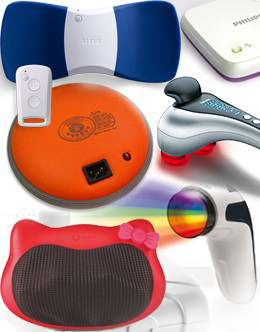There has been a fair amount of research on the therapeutic effects of light technologies for a broad range of conditions, such as allergies, wound healing, fibromyalgia, neuropathy, and even to help minimize the side effects of chemotherapy and radiation treatments for cancer patients. Polarized medical light has been found in studies to be particularly effective for pain management, wound healing, and other conditions because of its ability to penetrate deep into the body and stimulate healing at the cellular level. As such technologies are studied and more devices are brought to market, these products could have an impact on traditional OTC drugs. Kline’s upcoming Self-care Devices: U.S. Market Analysis and Opportunities study will examine the size, growth, and impact such devices have and are expected to have in the future on traditional OTCs across various categories, including acne, allergy, anti-itch, cold sores, hair regrowth, pain, and sleep aids, among others.
Pain management devices have recently emerged on retail shelves next to traditional OTC analgesics. The development of more portable, lightweight, and user-friendly wearable devices to help manage pain have increased consumers’ awareness and interest in such devices. Technologies such as TENS, microcurrent, light, heat, and massagers, which are employed to help consumers mitigate pain at home, are tracked in Kline’s Pain Management Devices: Global Market Analysis and Opportunities study. In the past, these pain management devices were commonly marketed to healthcare professionals, including physicians, physical therapists, and chiropractors, who prescribed them for their patients for at-home use. More recently though, these products are being increasingly marketed straight to consumers as a result of the Affordable Care Act, which reduced Medicare, Medicaid, and private insurance coverage for devices.
Most marketers of such devices start out using the direct sales channel, such as online demonstration videos, home shopping channels, or infomercials, to demonstrate product features and benefits as well as increasing consumer awareness. However, now we are seeing new pain management devices on retail shelves next to oral pain relief brands, such as Tylenol (Johnson & Johnson), Advil (Pfizer), and Bayer Aspirin (Bayer Group), and topical pain relief brands, such as Ben-Gay (Johnson & Johnson) and Icy Hot (Sanofi). Icy Hot TENS Relief (Sanofi) and Aleve Direct Therapy (Bayer Group) employ TENS technology to help mitigate pain, often for the lower back, and are sold via mass retailers, such as drug stores and big-box merchandisers.
These brands have bypassed the direct sales channel, going straight to retail shelves. Without the ability to demonstrate product features and benefits fully to consumers and their hefty price points, which can be five to six times higher than OTC pain relievers, the long-term commercial viability of these brands remains to be seen. There are two components that make up TENS devices: the initial TENS device purchase and also the refill pads that need to be replaced with use. The replacement pads are where manufacturers of TENS devices make most of the revenues from these brands.
While sales of pain management devices are growing rapidly, particularly via the direct sales channel, the consumers who often are the early adopters of these devices are likely to be chronic pain sufferers who have higher household incomes and thus more disposable income to invest in these devices, which can range in price from about $50.00 to hundreds of dollars. Therefore, at this nascent stage, while the technologies in pain management devices are a novelty to some consumers, their impact on traditional OTC topical and oral analgesics is expected to remain minor for the short term.
In the meantime, other devices for at-home use that help prevent or treat minor ailments, such as allergies, itch, cold sores, hair loss, headache, or insomnia, are making their way into this rapidly growing scene of at-home medical devices. HairMax is a hair regrowth device that is growing quickly because of its efficacy and use of the latest technological advancements. In the allergy category, Wholesale Medical Network has recently introduced Bionette, a compact device that uses light technology inserted into the nostrils to deliver drug-free relief from nasal allergy symptoms. While the self-care devices market is still in the emerging stage as well, it will be interesting to see how it evolves in the coming years. Driven by constant technological advancements, this market has great potential to become consumers’ next top alternative to traditional nonprescription drugs.
In our Self-care Devices: U.S. Market Analysis and Opportunities report, we will provide an in-depth assessment of the vibrant market for at-home devices. This report will help marketers address challenging matters, such as competition, leading technologies, key trends and drivers, consumers’ receptivity, sales, and, most importantly, the devices impact on traditional OTC categories. In-depth profiles of the leading brands will also be provided.

